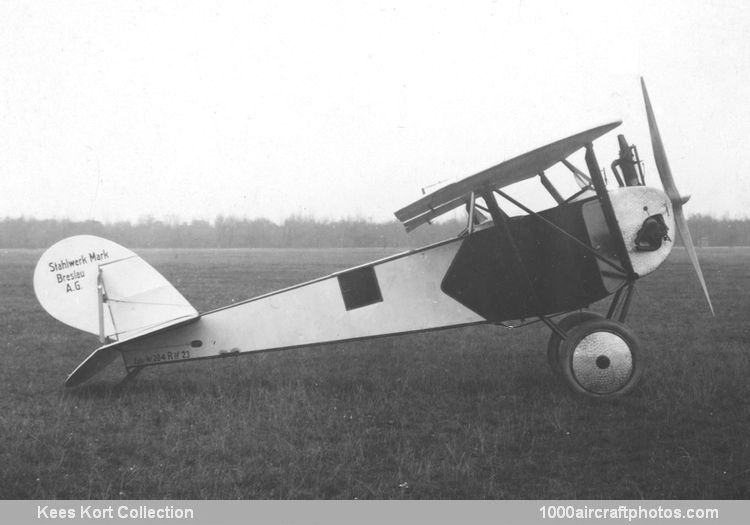06/30/2015. Remarks by Kees Kort: "After the Armistice of November 11, 1918, the German aircraft industry gradually diminished to come to an almost complete standstill after the signing of the Peace Treaty of Versailles on June 28, 1919. In this environment the German early aviator Walter Rieseler of Breslau, built in 1921 an ultralight parasol wing monoplane with a 28 hp Haacke two-cylinder engine. This plane was identified as the Rieseler R.I. Later, after a marginally more powerful 35 hp Anzani engine was fitted, it was identified as the R.II.
As Rieseler had no facilities to market his design and built it in quantity this is the time when the Stahlwerk Mark at Breslau came in, as this steel construction company saw opportunities to diversify by building airplanes. A special branch of Stahlwerk Mark, the Abteilung Flugzeugbau (Aircraft Section), was formed to build a version of the Rieseler design as the Stahlwerk Mark R.III/22 , where /22 identified the year of design of the machine. This was a huge success and lots of it were built. Exact numbers are not known but maybe between 70 and 110.
After this success Stahlwerk Mark continued with a two-seat trainer version, identified as the R.IV/23 (year of design 23) this time powered with various different engines. The machine in the photo above has a three-cylinder Stahlwerk Mark engine (a license-built Siemens Sh.4). Other samples had a 50 hp Anzani or a Mercedes engine. As the picture has so much detail under the elevator can be clearly read 'Fabr.Nr.204 R IV 23' which means that this sample has c/n 204. Unfortunately there are no lists of c/n of Stahlwerk Mark available, which makes it impossible to pinpoint this machine.
To complicate matters further, the contemporary aviation press sometimes identifies this design as the Rieseler RS.IV, without mentioning Stahlwerk Mark."
